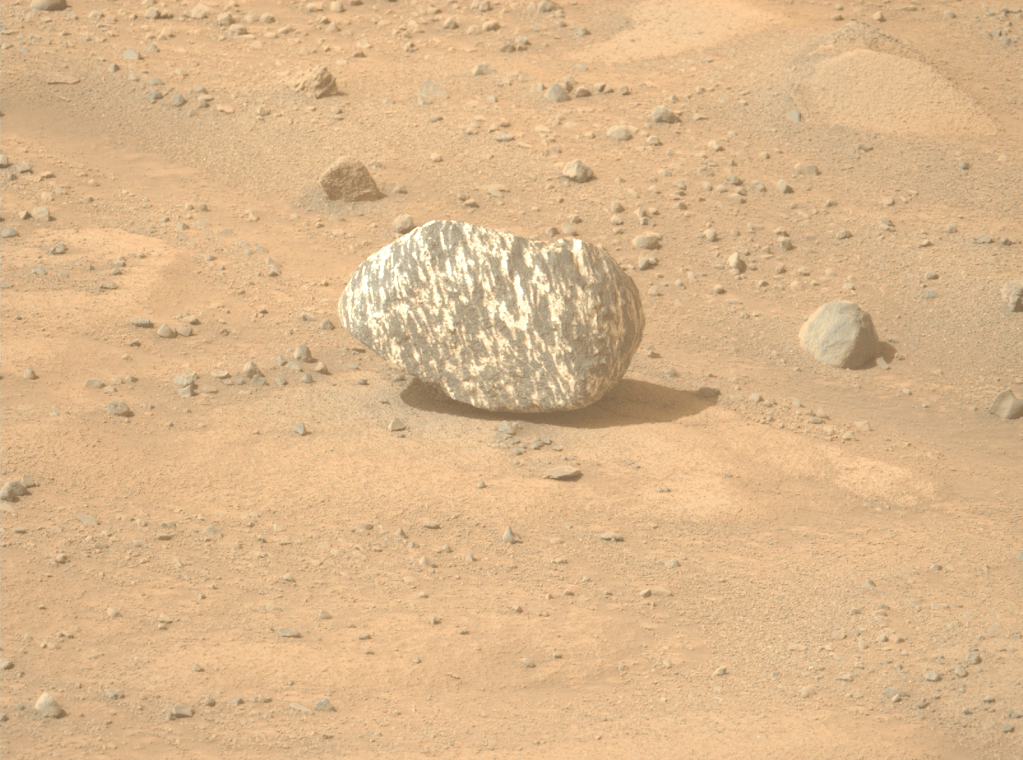

The idea that this “zebra” or “bad camo” rock could be metamorphic is really something, an interpretation I didn’t even seriously consider. If this is metamorphic, one would think at first glance that it isn’t more of the same material we’ve sorta-detected on Mars already, which is probably the hydrothermal or shock metamorphic kind. Mars Guy considered metamorphic rock in his last video only to discard it…
Then again, the Nili plateau region just beyond the crater rim is supposed to be so damned old, even for Mars, that it could preserve evidence for all kinds of craziness, and I’m not sure we can rule out that this rock isn’t impact ejecta from the plateau. Maybe this thing doesn’t preserve evidence for something as Earth-like as plate tectonics, but that banding pattern needs a deeper look. It may not be a match for the neatly-striped metamorphic rock of Earth, but Martian metamorphism that may have occurred deep within the crust is something we shouldn’t ignore. At the very least, I’d like Mars Guy’s comparison of this rock to freaking dolomite to be put to the test. There’s more evidence for plate tectonics on Mars than there is for that stuff!😅

For God’s sake, stop it with the conspiracy theories. Trace Gas Orbiter would absolutely not miss the, well, methane emission, from a single baby cow, let alone an adult specimen worthy of being prepared as wagyu. Everyone knows that a Japanese master chef would quit (or worse…) before disgracing himself thus. He would never abandon a thickly-marbled specimen on a great big windy crater rim like this.
This is Mars. If you want your vulgar gyudon, there’s plenty of that on the mad blue planet next door. Martian wagyu should be part of the finest sukiyaki, to be eaten in formal dress, in deeply contemplative silence.
… I should add - if you can get a sample of this rock for us, we’ll even let you eat part of it. It might be a bit salty, but you can be pretty sure Martian beef is nitrate-free…